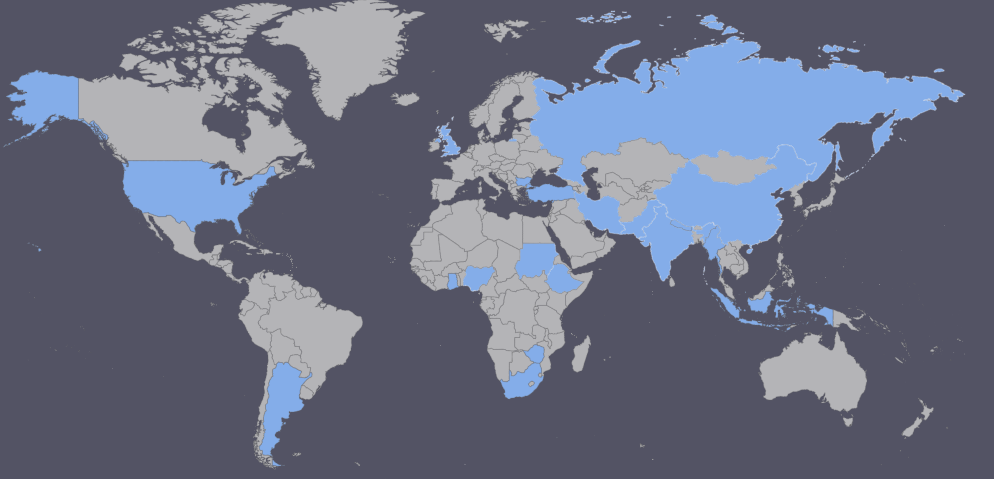Impact of Heavy Metals on the Soil and Groundwater of Ariaria Waste Dumpsite, Aba, South-Eastern Nigeria
Keywords:
Soil, Heavy metals, Groundwater, Physio-chemical parameters, DumpsiteAbstract
Municipal waste around Ariaria, Aba, Nigeria, was investigated to ascertain the impact of heavy metals on the soil and groundwater. Eighteen (18) soil samples were collected with each of the sampling point having three (3) soil samples collected at the depth of 0-10 cm, 10-20 cm and 20-30 cm and ten (10) groundwater samples were also collected from an existing borehole. Control soil samples were collected opposite the dumpsite area. The physio-chemical and heavy metal parameters of the soil and groundwater samples were assessed using Atomic Absorption Spectrophotometry (AAS) and Titrimetric method, respectively. Heavy metals analyzed for includes zinc, lead, iron, chromium, cadmium, copper, nickel, manganese, and cobalt. The average mean concentration of the heavy metals includes lead (6.252 mg/kg), chromium (7.486 mg/kg), iron (1493.598mg/kg), manganese (89.84 mg/kg), cobalt (16.2 mg/kg), cadmium (2.754 mg/kg), copper (41.53 mg/kg), zinc (270.4 mg/kg) and nickel (15.858 mg/kg). The mean concentration of heavy metals of the soil samples are in this order: Fe>Zn>Mn>Cu>Co>Ni>Cd>Pb>Cr. The physio-chemical parameters (pH, electrical conductivity, Total hardness, total dissolved solids, total suspended solids, major anions and cations) analyzed for all groundwater samples agree with the International World Health Organization (WHO) for potable water except pH and TDS (mg/l. The heavy metal contents include manganese (0.168 mg/l), cadmium (0.28 mg/l), lead (0.046 mg/l), nickel (0.12 mg/l), cobalt (0.016 mg/l), chromium (0.087 mg/l), copper (0.5 mg/l), magnesium (1.84 mg/l), zinc (0.023 mg/l) and iron (1.42 mg/l). The sieve analysis shows that the soil samples consist of 11.95% of Silt, 83.62% of Sand and 4.42% of little gravel. The mean permeability of the study area ranges from 0.19 (cm/sec) to 0.49 (cm/sec), the mean infiltration rate ranges from 6840 mm/hr to 31320 mm/hr and the grain size of the soil samples is well graded and well to poorly sorted. A strong degree of association was found to exist between lead and chromium, copper and zinc, nickel and lead using Pearson’s Correlation Coefficient.
References
Alloway, B.J., 1996. Heavy metals in soils. Halsted Press, John Wiley and Sons Inc. London, UK. p. 240.
Amadi, A.N., 2010. Effects of urbanization on groundwater quality: A case study of Port-Harcourt, Southern Nigeria. Natural and Applied Sciences Journal 11 (2), 143-152.
Challa, S., Kumar, R., 2009. Nanostructure oxides. Weinheim, Germany, Wiley. Pp. 29.
Eddy, N.O, Odoemelem, S.A., Mbaba, A., 2006. Elemental Composition of soil in some dumpsites located within Ikot-Ekpene. Electronic Journal of Environmental, Agricultural and Food Chemistry 5 (3), 1349-1365.
Elaigwu, S.E., Ajibola, V.O., Folaranmi F.M., 2007. Studies on the Impact of Municipal Waste Dumps on Surrounding Soil and Air Quality of Two cities in Northern Nigeria. Journal of Applied Sciences 7 (3), 421-425.
ESMP, 2017. Environmental and Social Management Plan Final Report of Abia State. SFG1692 V6 Pp 20-52.
Ezeoha, U.M., 2012. The Effect of the Solid Waste on the Quality of Soil in Ugwuaji Dumpsite. Unpublished M.Sc. Thesis. University of Nigeria, Nsukka, Nigeria.
FEPA, 1991. Guidelines and Standard for Environmental Pollution Control in Nigeria. Federal Republic of Nigeria, Nigeria. Pp. 61-63.
Giadom, F.D., Akpokodje, E.G., Abam, T.K.S., 2014. The contaminant status of Ariaria waste dumpsite in Aba, Abia State, Nigeria. Journal of Nigerian Environmental Society (JNES) 1 (2), 1-8.
Hilgenkamp, K., 2006. Environmental health: ecological perspective. Jones and Bartlett Publishers, Toronto, Canada, p. 83.
Iwuoha, G.N., Osuji, L.C., Onwuachu, U.I., 2013. Impact of waste dump on the sediment and surface water quality of otamiri river, Nigeria. Journal Applied Scientific Environmental Management 17 (4), 573-575.
Majolagbe, A.O., Kasali, A.A., Ganiyu, L.O., 2011. Quality assessment of groundwater in the vicinity of dumpsites in Ifo and Lagos, Southwestern Nigeria. Advances in Applied Science Research 2 (1), 289-298.
National Population Census, 2016. PHC priority Table. c2016. Available from: http://population.gov.ng/core-activities/surveys/dataset/2016-phc-priority-tables
NSDWQ, 2007. Nigerian Standard for Drinking Water Quality. Nigerian Industrial Standard NIS 554, Standard Organization of Nigeria, p30.
Nwankwoala, H.O., Nwowo, K.N., Udom, G.J., 2016. Assessment of Heavy Metal status of Groundwater in parts of Aba, Southeastern, Nigeria. International Journal of Emerging Engineering Research and Technology 4 (11), 27-36.
Nwankwoala, H.O., Amadi, A.N., 2013. Hydro Geochemical Attributes and Quality Status of groundwater in Port Harcourt Eastern Niger Delta. World journal of Science and Technology Research 1 (7), 151-167.
Sally, W., 2000. Control of Municipal Solid Wastes. Oxford Universe. Press, Oxford 6th eds. p. 642.
Tijani, M.N., Onodera, S., 2009. Hydrogeochemical assessment of metals contamination in an urban drainage system: a case study of Oshogbo township, SW Nigeria. Journal of Water Resource and Protection 3, 164-173.
Ukpong, E.C., Antigha, R.E., Moses, E.O., 2013. Assessment of heavy metals content in soils and plants around waste dumpsites in Uyo Metropolis, Akwa Ibom State. International Journal of Engineering and Science 7 (2), 2319-1805.
WHO, (2007. World Health Organization. Guidelines for Drinking Water, 4th Edition, Geneva.
Wizor, C.H., 2019. Impact of Ogbor Hill waste dumpsite on socio-economic activities of urban dwellers in Aba metropolis, Abia State, Nigeria. International Journal of Science and Research 8 (7), 1206-1213.
Downloads
Published
Issue
Section
License
The authors keep the copyrights of the published materials with them, but the authors are aggee to give an exclusive license to the publisher that transfers all publishing and commercial exploitation rights to the publisher. The puslisher then shares the content published in this journal under CC BY-NC-ND license.



